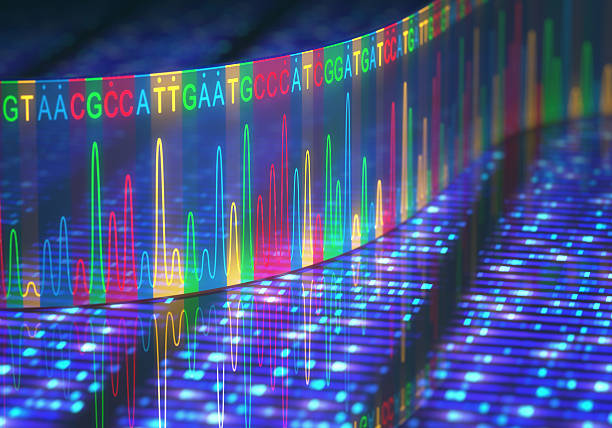Development of sequencing techniques
Sequencing techniques enable the direct determination of DNA or cDNA molecule sequences. Their speed, scalability, and high throughput have led to their broad implementation in scientific research. The sequencing of the human genome performed within the framework of the Human Genome Project is probably the most widely recognized achievement of sequencing technologies. This endeavor was accomplished between 1990 and 2003 using Sanger sequencing.1,1
Next-generation sequencing (NGS) has since been developed as an alternative sequencing method that greatly speeds up the sequencing process and reduces the cost of large-scale sequencing.2
Characteristics and advantages of next-generation sequencing
Next-generation sequencing is a massively parallel sequencing technique that uses fragmented DNA, which is clonally amplified and loaded on wells or microchips, as starting material.1,2 It enables the investigation of the genome, epigenome, and transcriptome. NGS technologies for genomic analysis encompass whole-genome sequencing, exome sequencing, and de novo sequencing; further, they enable the identification of rare somatic variants and aid genetic disease diagnostics. Next-generation sequencing can also identify epigenetic factors, including DNA methylation and DNA-protein interactions, using methylation sequencing and ChIP sequencing. Moreover, NGS can determine novel RNA variants and quantify mRNA expression utilizing total RNA and mRNA sequencing, noncoding RNA sequencing, and targeted RNA sequencing.
Next-generation sequencing has several important advantages, including its speed, reduced cost, high dynamic range, and small amount of sample material. Moreover, it does not require previous knowledge of the investigated sequences.3
Next-generation sequencing and precision medicine
Disease risks and characteristics vary among individuals. Precision medicine takes this variability into account and aims to identify therapeutic strategies tailored to the needs of the individual patients. NGS may aid the progress of precision medicine because it acquires a large amount of data on mRNA expression and genetic and epigenetic factors. It may help develop diagnostic and therapeutic strategies tailored to individual needs.
Implications of next-generation sequencing for the clinical practice
Next-generation sequencing has aided research advancement in multiple disease areas. The application of its findings in the clinical practice has faced more challenges but has still achieved significant progress.4 NGS can help provide answers regarding the etiology of rare genetic disorders due to its ability to rapidly sequence the genome. Moreover, it has enabled faster and more comprehensive testing in certain medical conditions, such as inherited cardiomyopathies, which are characterized by genetic heterogeneity.5 In certain situations, NGS has also been used for the diagnosis of infections with the severe acute respiratory syndrome coronavirus 2 (SARS-CoV-2), which causes the coronavirus disease 2019 (COVID-19).
Challenges and future research directions for next-generation sequencing
Despite the undisputable advances, there are still challenges to the broader application of NGS in the clinical practice. They include the validation and interpretation of the large number of identified genetic variants, standardization of the processes used in clinical diagnostics, and data management.4 Manufacturers also focus on developing NGS technologies that are more user-friendly and easier to apply in the practice. Moreover, further generations of sequencing technologies are being developed with the potential to determine nucleotide sequences directly in fixed cells.6
Sources:
- https://www.ebi.ac.uk/training/online/courses/functional-genomics-ii-common-technologies-and-data-analysis-methods/next-generation-sequencing/
- Behjati S, Tarpey PS. What is next generation sequencing? Arch Dis Child Educ Pract Ed. 2013;98(6):236-238.
- https://www.genome.gov/human-genome-project
- Di Resta C, Galbiati S, Carrera P, Ferrari M. Next-generation sequencing approach for the diagnosis of human diseases: open challenges and new opportunities. EJIFCC. 2018;29(1):4-14.
- Teekakirikul P, Kelly MA, Rehm HL, Lakdawala NK, Funke BH. Inherited cardiomyopathies: molecular genetics and clinical genetic testing in the postgenomic era. J Mol Diagn. 2013;15(2):158-170.
- Ke R, Mignardi M, Hauling T, Nilsson M. Fourth generation of next-generation sequencing technologies: promise and consequences. Hum Mutat. 2016;37(12):1363-1367.

